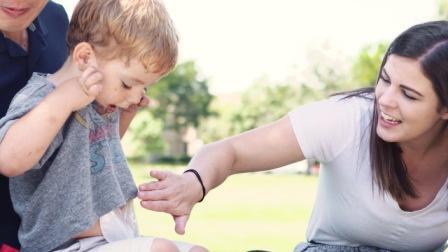
Children and teens who undergo ostomy surgery now have a resource written by their peers to help them navigate the challenges of middle school, high school, college and beyond.
The toolkit, “A Guide to Gutsy Living,” is the first resource specifically for - and by - young people who have undergone temporary or permanent ostomy surgery, usually to treat inflammatory bowel disease (IBD), and now have a surgically created opening, or ostomy, that allows stool to empty into a bag adhered to the individual’s abdomen.
Living with an ostomy is a daunting prospect for adults, let alone children and adolescents. “You don’t know what it’s going to look like, what it’s going to mean to your life,” said Jennie G. David, a PhD student in clinical psychology at Drexel University in Philadelphia, who led the project.
David was diagnosed with IBD at age 12, and underwent ostomy surgery at 19. David and her colleagues’ report describing the guide and how it was created was published in the journal Pediatrics.
As is typical with pediatric ostomy patients, after undergoing surgery to remove her colon and before being discharged from the hospital, a stoma nurse instructed David on how to care for her ostomy, she told Reuters Health in a telephone interview.
“The stoma nurse was wonderful, but all of her education was geared toward, ‘how do you put on the bag, how do you take off the bag,’” Davis said. “Not really ‘how do I live with this, how do I go to school with this.’”
David served as co-chair of the Patient Advisory Council (PAC) of the ImproveCareNow (ICN) Network, a quality-improvement collaborative of more than 100 centers in the U.S., Europe and Middle East caring for children and adolescents with IBD.
Through the PAC, David and her colleague and friend Alexander Jofriet, who was diagnosed with IBD at age 9 and underwent the surgery at 15, “got good information,” David said. “And we had positive role models, but it could very easily have been no role models or negative role models.” Jofriet is now a clinical data coordinator at Children’s Healthcare of Atlanta.
At an ICN Network meeting, David was asked to choose a song that represented her journey with IBD and play it at the close of the meeting. She chose Taylor Swift’s “We are never ever getting back together,” dubbing it “An Ode to my Colon.” Afterward, several clinicians asked her if she and other PAC members would be willing to talk to their patients who were facing ostomy surgery.
She and Jofriet began mentoring ostomy patients but quickly realized they couldn’t keep up with the demand on their own. They developed the tool kit to address this care need.
Information about ostomies on the web is largely focused on adults, and David and her team of patients and parents were unable to find educational materials that were “developmentally sensitive,” with images and topics relevant to young patients, such as those heading to college.
They developed a series of questions and topics to address concerns that patients might have before the surgery, immediately afterward and over the long-term, and targeted the guide for ages 10 to 17.
Topics in the final 19-page document include friends, school, travel, ostomy supplies, clothing, using emergency kits, playing sports and using humor to help in coping.
Essentially, David said, the goal of the resource is two-fold: firstly, to serve as models to pediatric patients living with ostomies that “I can go to work, and I can go to school, and I can be a normal person with a bag,” and secondly, to demonstrate how patients and parents are motivated and capable of contributing to clinical care.
Source: Reuters
 FR
FR EN
EN AR
AR








